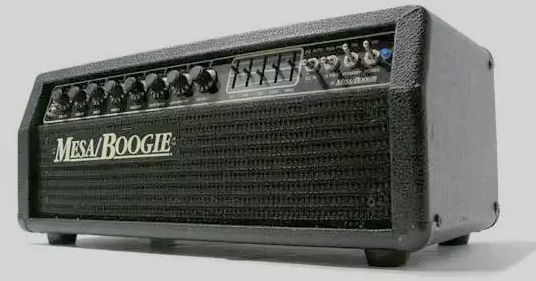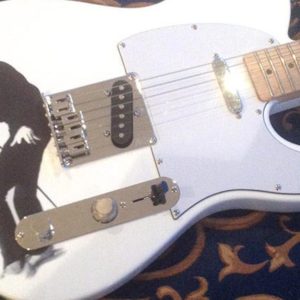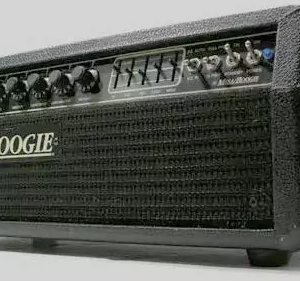
From Wikipedia…
Mark III
The Mark III was launched by Mesa/Boogie in 1985. It introduced a third channel, a “crunch” rhythm sound right in between the rhythm and lead channels. This amp has a dual footswitch system: one footswitch alternates between the current rhythm mode and the lead mode, and the other selects either the clean rhythm mode or the crunch rhythm mode. The two rhythm modes share all of their controls, while the lead mode only shares the rhythm modes’ tone stack, featuring independent gain and master volume controls. The physical switch for the crunch rhythm mode was implemented as a push/pull switch above the Middle frequency control. Most Mark IIIs have presence and reverb on the back (except for long chassis’) unless not desired by the buyer; Graphic EQ was also optional all in either head or combo format.
The Mark III went through multiple revisions, similar to the Mark II. Each revision had a slightly different voicing, but identical functionality. Non-Simulclass versions of the Mark III came in either 60w RMS with two 6L6s or 60w/100w with four 6L6s in the power section. Mark IIIs contain either four or five 12AX7 tubes in the pre-amp section, depending on if they have the reverb option. Simul-class Mark IIIs usually contain two 6L6s in the inner sockets and two EL34s in the outer sockets for 15w/75w use.
Black Stripe (1985)
These are distinguished by either the absence of a marking, a black dot, or a black marker stripe above the power cord entry. Early 100W and Simul US Voltage Black Stripes retained the same 105 power transformer as the IIC+, which is easily distinguished by its larger physical size than the later-introduced Mark III transformer. IIC+ non US voltage export power transformers and IIC+ output transformers are also seen in these models.
Most Black Stripes also re-used the faceplate from the Mark IIC+. This resulted in the first pot being labelled with Volume 1 in instead of the later Volume label. Furthermore, the pull function label above Middle knob was hand-etched onto the face plate resulting in a slightly different look than the other labels on the faceplate. Towards 1986, a new PCB revision was installed which enabled an additional component to be switched on when R2 was activated. This board was re-used in the Purple Stripes, although with a different revision number and different lead circuit component values.
Purple Stripe (1986)
The second revision was the “Purple Stripe” Mark III, which featured a purple marker stripe above the power cord. This amplifier was identical in component values and R2 channel as the later Black Stripes, but had a lead section much closer to a IIC+
Red Stripe (1987)
The third revision was the “Red Stripe” Mark III which featured a red marker stripe above the power cord. The amplifier had lead mode circuitry almost identical to the IIC+ and some minor changes in the preamp to make it similar in circuitry to a IIC+. A further PCB board revision with revised R2 channel was introduced which forces Treble Shift on when in R2 mode. The power circuitry and presence cap remained identical to the previous stripes however.
Blue Stripe (1988)
The fourth revision was the “Blue Stripe” Mark III which featured a blue marker stripe above the power cord. The lead channel was voiced so brightly, it is considered to be the most aggressive Mark Series Boogie ever introduced. The presence cap and voltage rating of some of the orange drops in the power section were also altered to mirror that of the IIC+
Green Stripe (1989)
The final revision was the “Green Stripe” Mark III, which was only available in a Simul-Class format. It was identical to the Blue Stripe, apart from having its overall gain reduced, except for the wiring of the outer two Class A power amp tubes which were switched to Pentode operation instead of Triode for a 10w RMS increase over previous Simul-Class amplifiers (15w/75w) making 25w/85w.
Mesa ultimately ended the Mark III’s production since it overlapped with production of its successor, the Mark IV, which was introduced in 1990. Mark IIIs were still in steady production around 1994, and finally ceased as late as 1997, 11 years after their launch.












